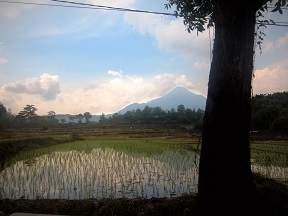Eco-friendly personal care is one of the topics in the coming BIO World Congress on Industrial Biotechnology in Des Moines, Iowa, July 8-11. Other topics include of course biotechnology and genetic modification, and the future of agriculture. Organized by BIO, ‘the world’s largest trade association representing biotechnology companies, academic institutions, state biotechnology centres and related organizations across the United States and in more than 30 other nations.’

Sustainable personal care
BIO proudly proclaims biotechnology’s successes. The congress will feature sessions with titles like ‘Ingredients for a Healthier tomorrow’ and ‘Renewable Chemicals for a Sustainable Planet’. And, as said, one on personal care. Consumers ask for products that are naturally sourced and sustainable, says BIO, and companies meet this demand. Using biotechnology, many personal care products can be made from renewable resources, from corn to algae. With smaller environmental footprints than the same ingredients made from fossil fuels. For instance, microbes can produce isopropanol from carbon-rich waste streams of industrial processes; this alcohol is used to extract and purify oils found in skin care products. The carbon-rich gases can also produce esters, using synthetic biology, the basis of many aromas and fragrances.
Many hair care products contain 1,3-butanediol, a product that retains moisture. Formerly it was petroleum-based, but it can very well be produced from sugars. Other moisturizers include 1,2-propanediol, readily made from glycerol, a by-product of biodiesel production. And squalane, a long hydrocarbon, a key ingredient in many consumer beauty products. Originally, squalane was made from shark livers. Then from olives. But with modern biotechnology, it’s easy to produce it from sugars. Industry also uses sugars to produce succinic acid, commonly used as an emollient or fragrance carrier in skin creams and lotions. Succinic acid is effective in combating acne and reducing skin flakiness and wrinkles.
The changing face of chemicals production
The chemicals industry is quickly changing. Market growth in renewable chemicals is significant. Both major players and start-ups scramble to secure a slice of this growth market. BIO devotes a supersession to the growing market for renewable chemicals, their production processes, and feedstock/production options. It will devote special attention to the opportunity for corn-based ethanol facilities to produce a carbohydrate feedstock for renewable chemicals production. This would provide an opportunity for the ethanol industry to diversify while providing a low-cost carbohydrate feedstock for the production of renewable chemicals.

Another major session will be devoted to alternatives to synthetic pesticides. These pesticides have come under scrutiny and some products have been withdrawn from the market for environmental safety reasons. But this poses a major problem to industry, as it typically costs over 10 years and over $ 300 million to develop a new synthetic pesticide. Bio-pesticides can be a sustainable alternative, if they are as effective as synthetics. Microbial pesticides cannot always meet these requirements. Emerging technologies such as peptide-based biopesticides and RNA-based biopesticides have this potential. BIO mentions Vestaron that developed a pipeline of peptide-based bio-insecticides with the efficacy of synthetics and the safety of biologicals. And Greenlight Biosciences that developed a revolutionary system to produce RNA for pest and disease control in agriculture. US EPA recently established an Emerging Technologies Branch to better handle the registration of such novel products. The BIO panel will discuss technical, regulatory and commercial aspects of these technology-based bio-pesticides.
BIO: reinvigorate agriculture
Yet another panel will delve into the role of innovation in reinvigorating the ag economy. It will ask what the farm belt of the future will look like, and how we could get there. BIO addresses the questions how American farmers can use technology to add value to their products, diversify income streams, and reduce farm input costs. What tools are available to facilitate economic development planning projects that serve rural communities? Will this benefit the environment, the water we drink, and the products we buy? BIO proposes that biology + innovation + technology + good policy will equal progress toward sustainable agricultural solutions and a competitive, resilient American economy.
Biotechnology will also serve developing countries. For instance, the BIO website reports about an interview with Dr Pamela Ronald, a plant biologist, in Knowable Magazine. As she puts it: ‘sustainable agriculture has three pillars: social, economic and environmental. It creates food that’s nutritious, it allows farmers to reduce the amount of land and water they use, to foster soil fertility and genetic diversity, and to reduce toxic inputs. And it enhances food security for the very poorest farmers and families in the world. So, for example, if you can breed resistance into a plant, whether through conventional or genetic engineering, and that means you can reduce the amount of sprayed chemicals you use, that’s part of sustainable agriculture.’ And then she goes on to tell the story of the development of a flood-resistant rice variety. If common rice leaves are submerged in water for more than three days, the plant will die. With climate change creating inclement, unpredictable weather, farmers need a rice plant that can withstand harsh conditions, she says. Dr Ronald and her team used genetic technology to produce this new variety. She stresses the need for the fast development of better crops that require less insecticides. ‘The World Health Organization estimates that 200,000 people die every year from misuse or overuse of insecticides, primarily in less developed countries.’ And BIO concludes: ‘if we embrace the availability of these biology-driven solutions, we can farm smart and sustainably so we can feed the world and protect our environment.’
Interesting? Then also read:
Can we engineer life? Golden rice
Psychology of innovation: biotechnology should learn to listen!
Rejuvenation through biotechnology, for whom?
